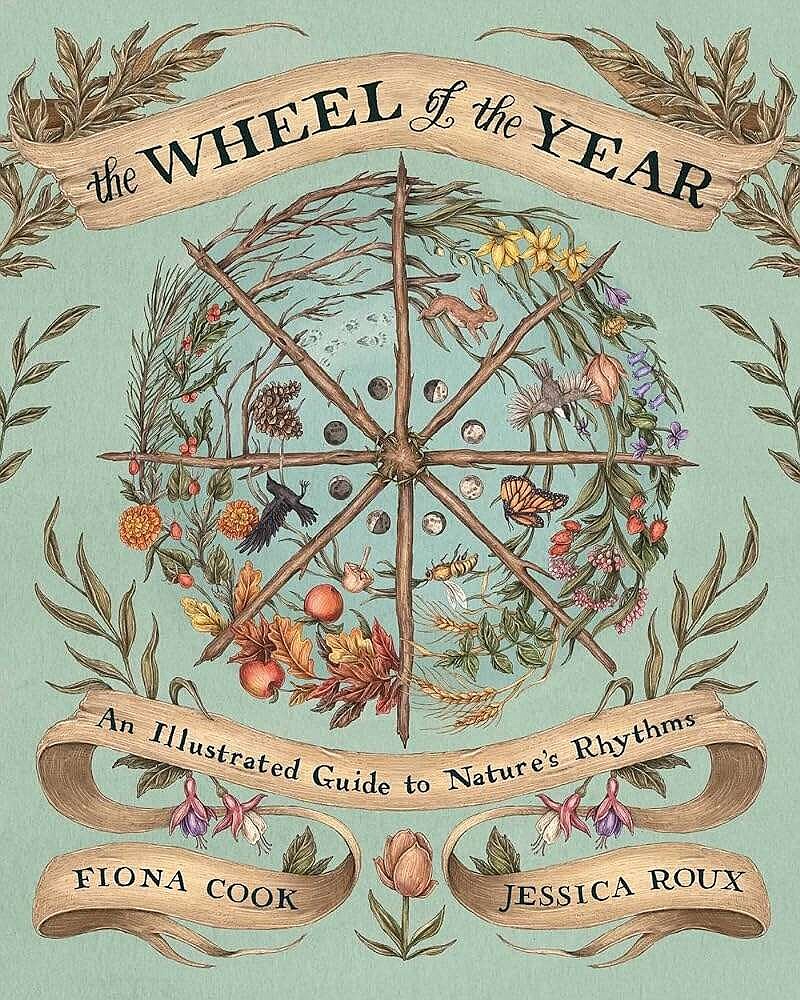"This book is not so much about learning how to do magic. It is ... about learning how to find and recognize magic."
Magic is certainly what you will find within the pages of "The Wheel of the Year: An Illustrated Guide to Nature's Rhythms" by Fiona Cook and Jessica Roux. Opening with a few precautions to educate young ones about being safe in nature, this book gets the "boring" part out of the way so that readers can quickly jump into the fun bits.
Like the title suggests, each section covers one of the eight "spokes" in the Wheel of the Year, starting with Ostara, also known as the Spring or Vernal Equinox, and ending with Imbolc, perhaps better recognized as Saint Brigid's Day.
Each chapter can be broken down into smaller sections: Rhythm of the Wheel, which explains how much sunlight we are getting during the season and why; Spirit of the Season, which focuses more on the feelings that surround the season; Celebrations: Past and Present, which lists and describes other holidays that have been celebrated around the same time; Scavenger Hunt, which calls upon readers to look for signs and symbols of the changing seasons; Plants (and sometimes animals) of the Season, which walks the reader through the gardening process and lists flora and fauna they may find; Altars, which gives suggestions on how to decorate an altar for each season; and Rituals, which describes modernized rituals the reader can perform to celebrate the turning of the wheel.
Inserted throughout are other activities, crafts, and recipes the reader can make on their own or with an adult, all relevant to their respective seasons.
The beautiful thing about "The Wheel of the Year" (besides the softly detailed illustrations) is that while magic is what may be the appeal for a young reader, it also sneaks in a healthy amount of science. For example, the chapter on Mabon, or the Autumn Equinox, has a section explaining the Wood Wide Web, which is a network of mushrooms and plants that can transmit messages across an entire forest, much like the internet. Another example is how the chapter on Midsummer (Summer Solstice) has a section about monarch butterflies, their dependence on milkweed and their migration across North America.
The authors also encourage readers to spend time outdoors, take in their surroundings and document their observations and feelings. This is as much a book about natural science as it is about magic, because really, isn't nature a magic of its own?
Lydia Gallagher is the youth services assistant librarian at Missouri River Regional Library.

